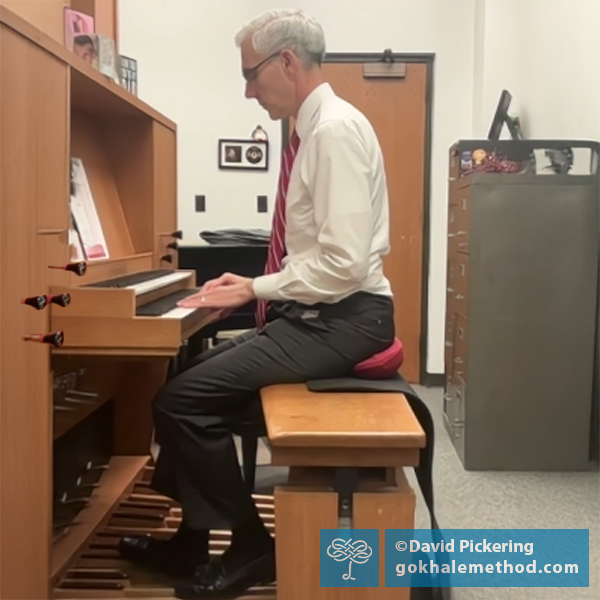I came upon the Gokhale Method® very much by chance. Years ago I worked with a pianist named Sheila Page who was trained in a technique which was founded by the American music teacher Dorothy Taubman. Taubman observed people with high levels of playing ability, found out what they did so well, codified it into a method and taught it. At a Taubman workshop I heard of Peter Egoscue, who had devised a therapeutic exercise program; I worked from his book when I hurt in places, and had some improvement with that. Doing further research for pain relief, I then encountered Esther Gokhale’s name. Not too long after, my son and I drove together to attend a one-day Immersion course Esther was teaching in Boulder, Colorado.

